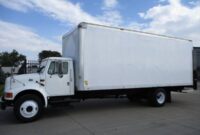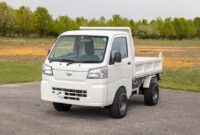Pickup Trucks 4×4: Your Comprehensive Guide to Unstoppable Versatility pickup.truckstrend.com
In the automotive landscape, few vehicles command the same respect and admiration for their sheer capability as the 4×4 pickup truck. More than just a mode of transport, these rugged machines are multi-talented workhorses, adventurous companions, and reliable daily drivers, embodying a unique blend of power, utility, and go-anywhere spirit. From navigating treacherous off-road trails to hauling heavy loads or simply providing peace of mind in adverse weather, the 4×4 pickup has cemented its place as an indispensable tool for countless individuals and businesses. This comprehensive guide will delve into the world of 4×4 pickup trucks, exploring what makes them tick, their myriad benefits, crucial considerations for ownership, and practical advice to maximize their potential.
Pickup Trucks 4×4: Your Comprehensive Guide to Unstoppable Versatility
What Defines a 4×4 Pickup Truck? The Heart of the Beast
At its core, a 4×4 (four-wheel drive) pickup truck is distinguished by its drivetrain system, which can deliver power to all four wheels simultaneously, unlike a standard 2WD (two-wheel drive) vehicle that powers only the front or rear wheels. This capability is managed by a component called a transfer case, located behind the transmission. The transfer case allows the driver to select different drive modes, typically:
- 2H (Two-Wheel Drive High): Power is sent only to the rear wheels (most common for daily driving on paved roads).
- 4H (Four-Wheel Drive High): Power is sent to all four wheels for increased traction at higher speeds, suitable for slippery conditions like snow, gravel, or light off-road trails.
- 4L (Four-Wheel Drive Low): Engages a lower gear ratio in the transfer case, multiplying torque for maximum pulling power and control at very low speeds, ideal for extreme off-roading, climbing steep inclines, or navigating heavy obstacles.
Some advanced systems also offer Automatic 4WD (4A/Auto 4×4), which intelligently shifts between 2WD and 4WD as needed, providing convenience and optimal traction without manual intervention. The integration of robust differentials and durable axles further enhances the 4×4 pickup’s ability to maintain grip and distribute power effectively across challenging terrains.
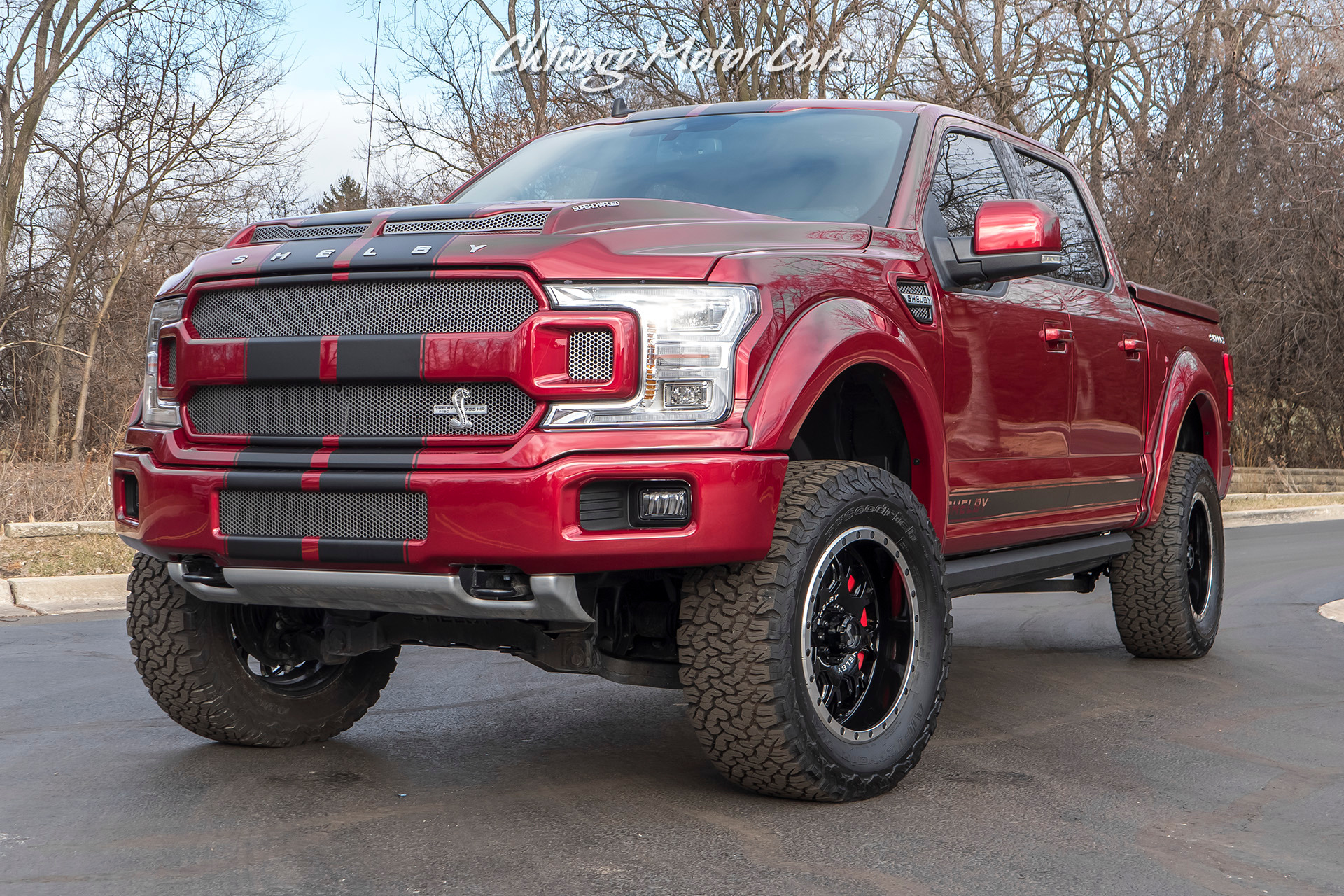
The Unrivaled Benefits of 4×4 Pickups
The advantages of owning a 4×4 pickup truck extend far beyond just off-roading. Their inherent design offers a suite of benefits that make them incredibly versatile:
- Superior Traction and Control: This is the primary benefit. Whether you’re facing muddy construction sites, snow-covered roads, icy patches, or sandy trails, the ability to send power to all four wheels significantly enhances grip, preventing slippage and maintaining stability.
- Unmatched Off-Road Prowess: For adventurers, hunters, campers, or those who work in remote locations, a 4×4 pickup is essential. Its higher ground clearance, robust suspension, and specialized drive modes allow it to conquer rugged landscapes, traverse deep ruts, and climb over obstacles that would halt a 2WD vehicle.
- Enhanced Towing and Hauling Capability: While 2WD trucks can tow, 4×4 models offer superior control and stability when pulling heavy trailers, especially on unpaved surfaces, boat ramps, or steep grades. The extra traction prevents wheel spin under heavy loads, ensuring safer and more efficient transport.
- Durability and Robustness: Built with stronger frames, heavy-duty suspensions, and more durable components, 4×4 pickups are designed to withstand the rigors of demanding work and adventurous pursuits. This inherent toughness contributes to a longer lifespan and greater reliability.
- Increased Resale Value: Due to their versatility and higher demand, 4×4 pickup trucks often command a higher resale value compared to their 2WD counterparts. This makes them a sound investment for many buyers.
- Versatility for Every Lifestyle: From daily commuting and family errands to weekend adventures and demanding job sites, a 4×4 pickup seamlessly adapts. It’s a vehicle that can truly do it all.
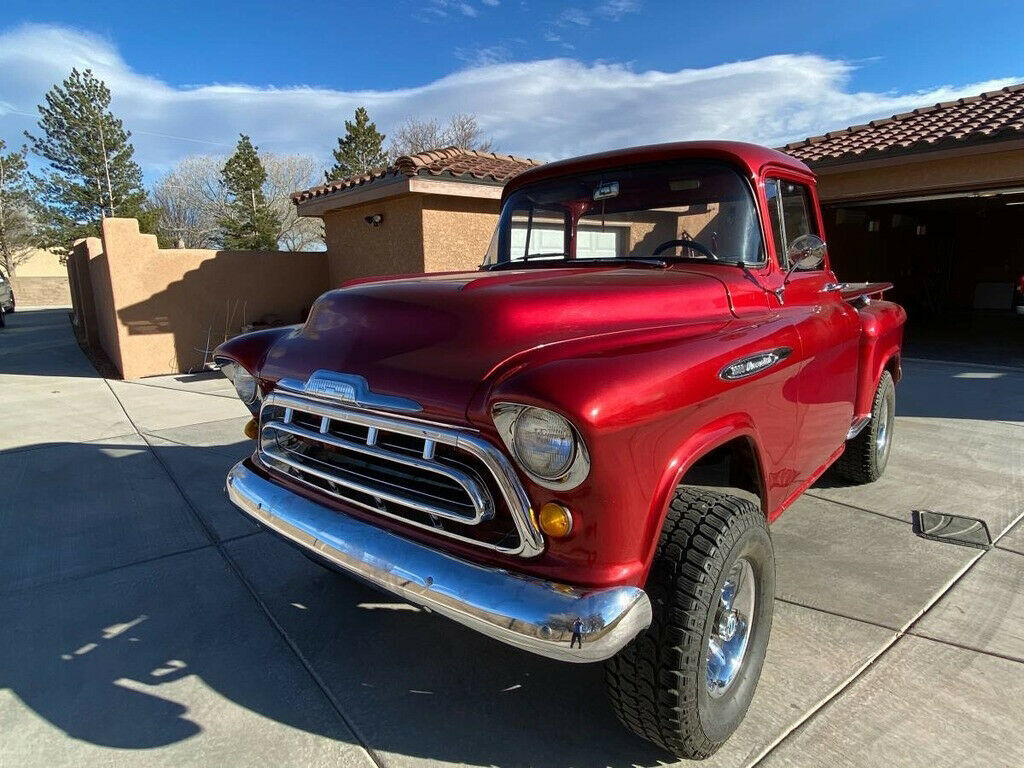
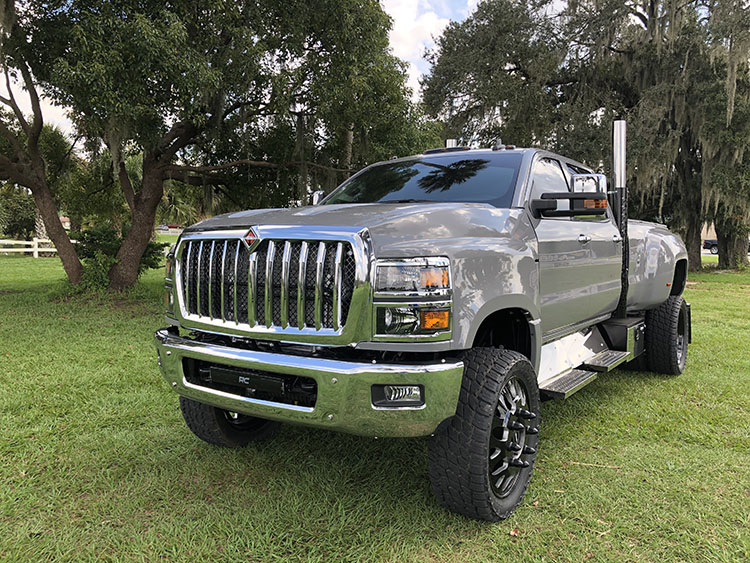
Key Considerations When Choosing Your 4×4 Pickup
Selecting the right 4×4 pickup requires careful thought, as the market offers a vast array of options. Consider these factors to find your perfect match:
-
Intended Use:
- Work Truck: Prioritize payload, towing capacity, bed length, and durability.
- Off-Road Enthusiast: Focus on ground clearance, specialized suspension, locking differentials, and available off-road packages (e.g., Ford Tremor, Ram Rebel, Chevy ZR2, Toyota TRD Pro).
- Daily Driver/Family Vehicle: Comfort, fuel economy, safety features, and interior space become more important.
- Towing Specialist: Look at maximum towing capacity, engine torque (often diesel), integrated trailer brake controllers, and tow mirrors.
-
Size Category:
- Mid-Size (e.g., Toyota Tacoma, Chevy Colorado, Ford Ranger): More maneuverable, better fuel economy, suitable for lighter tasks and narrower trails.
- Full-Size Light-Duty (e.g., Ford F-150, Ram 1500, Chevy Silverado 1500): The most popular segment, offering a balance of capability, comfort, and features for most needs.
- Heavy-Duty (e.g., Ford F-250/350, Ram 2500/3500, Chevy Silverado 2500/3500 HD): Built for maximum towing and payload, often with powerful diesel engines, designed for serious work.
-
Cab and Bed Configuration:
- Regular Cab: Two doors, typically longest bed, maximum utility, minimal passenger space.
- Extended Cab (e.g., SuperCab, Double Cab): Smaller rear doors, limited rear seating, good balance of bed length and occasional passenger use.
- Crew Cab (e.g., SuperCrew, Quad Cab): Four full-size doors, spacious rear seating, shorter bed options, ideal for families or crews.
-
Engine Type:
- Gasoline: Often more affordable upfront, good for general use, wide range of power outputs.
- Diesel: Higher torque, superior fuel economy (especially when towing), greater durability for heavy work, but higher upfront cost and maintenance.
-
Advanced 4×4 Features: Look for options like electronic locking differentials (e-lockers), limited-slip differentials (LSDs), hill descent control, multi-terrain select systems, and specialized off-road tires.
-
Budget: Consider not just the purchase price, but also fuel economy, insurance costs, and maintenance expenses, which can be higher for 4×4 systems and larger trucks.
Maintaining Your 4×4 Pickup for Peak Performance
A 4×4 pickup is a robust machine, but regular maintenance is crucial to ensure its longevity and continued capability.
-
Routine Fluid Checks & Changes:
- Engine Oil: Follow manufacturer recommendations.
- Transmission Fluid: Critical for smooth operation.
- Transfer Case Fluid: Often overlooked but vital for the 4×4 system.
- Differential Fluids: Front and rear differentials require specific fluid types and regular changes, especially after water crossings.
-
Tire Care:
- Rotation: Regular rotation ensures even wear.
- Pressure: Maintain correct tire pressure for optimal handling, fuel economy, and tire life.
- Tread Depth: Monitor for wear and replace when necessary. Consider all-terrain (AT) or mud-terrain (MT) tires if you frequently go off-road.
-
Suspension and Steering Components:
- Regularly inspect shocks, springs, bushings, ball joints, and tie rods for wear or damage, especially after off-roading.
-
Brake System:
- Check brake pads, rotors, and fluid regularly. Heavy loads and off-road driving can accelerate wear.
-
Undercarriage Inspection:
- After off-roading, inspect the undercarriage for any damage to skid plates, driveshafts, exhaust, or fuel lines. Wash off mud and debris to prevent rust.
-
Use Your 4×4 System: Engage 4H periodically (e.g., once a month for a few miles on a loose surface) to keep the components lubricated and functioning properly. Avoid using 4H on dry, paved roads, as it can cause drivetrain bind and damage.
Advanced 4×4 Features and Off-Roading Tips
For those looking to push the boundaries, understanding advanced features and proper techniques is key:
- Locking Differentials: Electronically or mechanically "lock" the wheels on an axle to spin at the same rate, providing maximum traction when one wheel is airborne or slipping. Use sparingly and only in extreme low-speed, off-road conditions.
- Low-Range Gearing (4L): Essential for crawling over rocks, descending steep hills, or pulling heavy loads through challenging terrain. It provides immense torque multiplication and precise control.
- Hill Descent Control (HDC): Electronically manages braking to maintain a slow, controlled speed down steep grades without driver input.
- Multi-Terrain Select/Drive Modes: Optimizes throttle response, traction control, and transmission shift points for specific terrains (e.g., sand, mud, rock).
- Recovery Gear: A winch, snatch strap, D-shackles, and a shovel are crucial for self-recovery or assisting others.
- Driving Techniques:
- Slow and Steady: Most off-road obstacles are best tackled slowly.
- Read the Terrain: Plan your line, identify obstacles, and understand the surface.
- Tire Pressure: Lowering tire pressure slightly (e.g., 15-20 psi) increases the tire’s footprint, providing better flotation and grip on soft surfaces like sand or snow. Remember to reinflate afterwards.
- Spotter: When navigating complex obstacles, a spotter outside the vehicle can provide invaluable guidance.
- Environmental Responsibility: Stay on marked trails, pack out what you pack in, and minimize your impact on the environment.
Pickup Trucks 4×4: Estimated Starting MSRP & Key Features
Please note: Prices are highly variable based on trim level, options, region, and current market conditions. The figures below are estimated starting MSRPs for 4×4 models and should be used as a general guide.
| Model Category | Example Models | Estimated Starting MSRP (4×4) | Key 4×4 Features & Considerations | Target User |
|---|---|---|---|---|
| Mid-Size | Toyota Tacoma, Ford Ranger, Chevy Colorado | $35,000 – $45,000+ | Good maneuverability, often better fuel economy, suitable for narrower trails. TRD Pro/ZR2/Raptor trims for serious off-roading. | Urban drivers, light-duty work, off-road enthusiasts, smaller families |
| Full-Size | Ford F-150, Ram 1500, Chevy Silverado 1500 | $45,000 – $60,000+ | Best-selling segment, wide range of engines (V6, V8, Hybrid), advanced tech, excellent balance of capability and comfort. | Most general users, towing boats/RVs, daily driving, medium-duty work |
| Heavy-Duty | Ford F-250/350, Ram 2500/3500, Chevy Silverado 2500/3500 HD | $55,000 – $75,000+ | Maximum towing and payload capacity, often with powerful diesel engines, robust chassis for extreme demands. | Commercial use, heavy equipment hauling, large RVs/fifth-wheels, serious work |
Frequently Asked Questions (FAQ) About Pickup Trucks 4×4
Q1: What’s the difference between 4WD and AWD?
A1: 4WD (Four-Wheel Drive) systems are typically found in trucks and SUVs and are designed for severe off-road conditions. They often have selectable modes (2H, 4H, 4L) and are not meant for continuous use on dry pavement. AWD (All-Wheel Drive) systems are generally designed for on-road traction in slippery conditions (rain, snow) and operate continuously without driver input, distributing power as needed. AWD vehicles usually lack a low-range gear.
Q2: Is a 4×4 worth it if I don’t go off-road?
A2: It can be. While off-roading is a major benefit, 4×4 also provides enhanced safety and peace of mind in adverse weather conditions (snow, ice, heavy rain), improved traction for towing on unpaved surfaces, and generally commands a higher resale value. If you live in a snowy climate or frequently tow, it’s often a worthwhile investment.
Q3: How often should I use my 4×4 system?
A3: If your truck has a part-time 4×4 system (selectable 2H, 4H, 4L), you should engage 4H for a few miles every month or two, ideally on a loose surface like gravel or dirt. This circulates fluids and keeps the components lubricated and ready for use. Avoid using 4H on dry pavement, as it can cause "drivetrain bind" and damage.
Q4: What kind of maintenance does a 4×4 system require?
A4: Beyond standard vehicle maintenance, 4×4 systems require periodic fluid changes for the transfer case and front/rear differentials. The frequency depends on your vehicle’s manufacturer recommendations and your usage (e.g., more frequent changes if you regularly go off-roading or through water). Also, regular inspection of driveshafts, U-joints, and axles is important.
Q5: Can I convert a 2WD pickup to 4×4?
A5: While technically possible, converting a 2WD pickup to 4×4 is a complex, time-consuming, and very expensive undertaking. It typically involves replacing the entire front suspension, adding a front differential, transfer case, driveshafts, and often modifying the transmission. It’s almost always more practical and cost-effective to sell your 2WD truck and purchase a factory-built 4×4 model.
Conclusion: The Enduring Appeal of the 4×4 Pickup Truck
Pickup trucks with 4×4 capability represent the pinnacle of automotive utility and rugged versatility. They are more than just vehicles; they are indispensable partners for work, adventure, and daily life, capable of tackling challenging terrains and demanding tasks with unwavering confidence. From navigating remote job sites to exploring breathtaking wilderness trails or simply ensuring safe passage through winter storms, the 4×4 pickup offers a peace of mind and freedom that few other vehicles can match. Understanding their mechanics, appreciating their benefits, and committing to their proper care will ensure that your 4×4 pickup remains a reliable and unstoppable force for years to come, truly embodying the spirit of going anywhere and doing anything.

